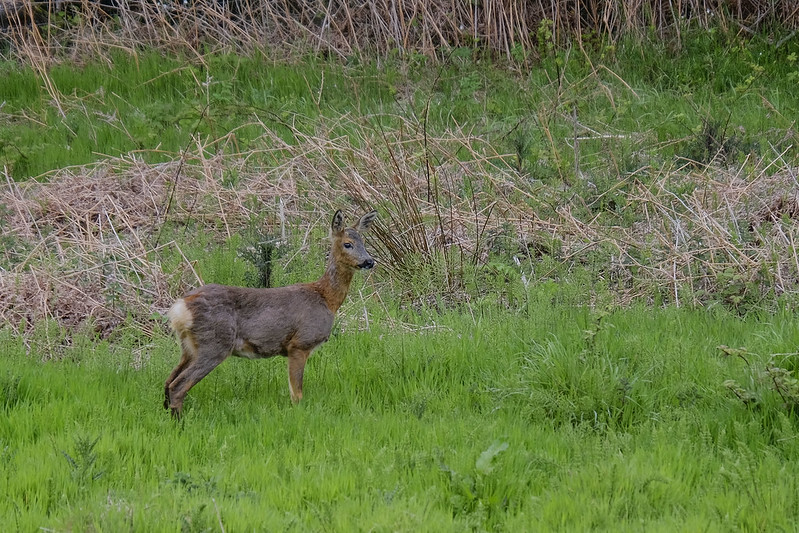As Autumn arrives, it's just a small matter of waiting for the trees to explode into their auburn colours, nature’s last roar of the year, before the leaves start to fall.
After the beautiful purple shades on the moorland, it's time for trees to do their thing. Our woodlands really come into their own this month, changing our view of a green landscape into one of a myriad different warm hues. You'll be rewarded with vibrant colours of red, orange, mahogany, mustard and gold, and a multitude of fading greens, as well as impressive fungi clinging to standing and fallen deadwood.
Our tip
Dalby Forest is at its best in autumn. The blues and greens of pines and spruces being complemented by the golden needles of larch, the bright yellow of ash leaves, the red leaves of wild cherries and the greens, yellows and russet browns of oak. Top locations to enjoy the autumn shades in the Forest include Haygate, Crosscliff, Staindale Lake and Bickley Gate.
Also look out for:
- Fungi galore. On the forest floor the caps, spikes and spheres of fungi put in their annual appearance. Russulas and agarics grow amongst the conifer needles and faded grasses, while yellow spikes of Stag’s horn fungus and the aptly named Candle Snuff sprout from decaying stumps. As leaves rain down and moisture builds up in the soil the fungi begin to fruit. These are the fascinating shapes we see: Shaggy Inkcaps, Stinkhorn, Jelly Ear, Chicken of the Woods, Orange Peel Fungus, Puffballs and Penny Buns.
- Popular spots to hunt for fungi include woodland near Goathland, Yorkshire Wildlife Trust's Little Beck Wood, and, in the Howardian Hills, Yearsley Moor and Grimston Moor. Both of these have areas of deciduous and coniferous trees, deadwood on the ground and woodland tracks. Remember to keep to footpaths and bridleways when searching for fungi in areas of privately owned woodland.
- If you'd like to find out more, especially which ones are edible, then do get yourself booked on a fungi foray event. Ryenats hold an annual event while Taste the Wild run a number of foraging courses but they are very popular, book up quick! The Yorkshire Arboretum also organise fungi forays too. Tees Valley Wildlife Trust and Whitby Naturalists also hold fungi events.
- Sloes, ripe now on blackthorn trees. Look out for them in scrubland, woodland and hedgerows on your walks. The extremely bitter purple/blue fruits are superb for making a traditional warming liqueur – sloe gin, but remember to leave some for the birds! Sloes are said to be at their best when picked after the first frosts. Whether you can wait that long is up to you but the fruit should be plump and juicy before it's picked. Sloes form on the second year’s growth so try hedges that were not cut the previous winter.
- Red deer and fallow deer rutting. Deer stags are at the peak of their fitness and are ready to battle antler to antler to gain dominance of a harem of hinds. Lots of dramatic bellowing, posturing and bashing around to intimidate their rivals ensues! Deer parks provide a great chance to see and hear this impressive natural show, but wild deer do roam around the moors too. Herds are known to graze in the clearings at the ancient woodland Ashberry Nature Reserve, near Rievaulx, maintained by Yorkshire Wildlife Trust - so a stealthy early morning visit might pay dividends.

Walks of the month
As October is the best month for autumn colour, it has to be a woodland walk or two or three...
The Yorkshire Arboretum in the Howardian Hills, with 6,000 trees and its mix of native and non-native trees is spectacular as the leaves turn rich shades of red, yellow and orange. It's a great place for a wander. Alternatively a walk on the footpaths and bridleways through the woodlands of the Hovingham Estate (pdf) are also stunning.
Back in the National Park, the 3.2 km Ellerburn walk in the prettiest corner of Thornton le Dale, follows the beck upstream to the hamlet. The stroll, along the riverside, roads and pavements, takes in a majestic row of orange beech trees and includes the Tea Cosy Tearoom at the halfway point with a lovely garden.
